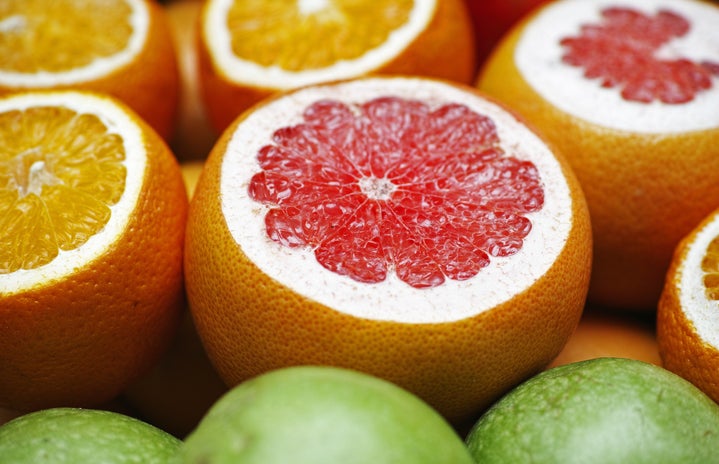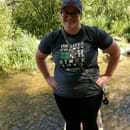The Zero Waste Lifestyle has become more and more popular in recent years. The zero waste concept was born in the 1970s, when Paul Palmer started Zero Waste Solutions, a company that took labratory chemicals that were going to be wasted and resold them to scientists. Zero Waste didn’t become a lifestyle until Brea Johnson popularized it in 2008.
The main concept behind zero waste is to reduce, reuse, and recycle as much as possible. That means not buying things you don’t need (reduce), reusing and repurposing old items into new things, and recycling or composting waste. An important part behind zero waste is to use what you already have, then replace it. For example, I need to use up the rest of the dryer sheets I have before I can get some wool dryer balls. If I throw out all the dryer sheets I currently have, I would be wasting perfectly good resources.
A few weeks ago, I attended a presentation at Stout’s Interior Design club on Zero Waste. I realized that a lot of what I do already is part of a zero waste lifestyle. I knew that what I was doing was trying to reduce my impact on the environment, I just didn’t know that there was a name for it. I had heard of Zero Waste before, and thought it was something very strict that would be hard to follow. From the presentation, I learned that zero waste is a goal, and it doesn’t happen overnight. Small changes to our habits add up.
Here are some tips I learned about starting a zero waste lifestyle.
- Do a Trash Audit
-
The best way to start working towards a zero waste lifestyle is understand what you throw away, and the best way to do that is with a trash audit. I did one last semester for my online class, and I was surprised with how little trash I accumulated compared to my recycling and compost. For one week, I collected all the trash, recycling, and compost I produced, then at the end of the week weighed each bag. I accumulated 1.6 pounds of trash, 1.8 pounds of compost, and almost 2 pounds of recycling.
When you do a trash audit, ask yourself qustions when going through your trash at the end: could this be replaced with something reusable? could this have been repaired and reused? can I donate this instead of throwing it away? did I really need to buy this in the first place?
Understanding what you throw away is an important part in changing habits. If your trash bin is full of disposable coffee cups, invest in a reusable coffee mug or travel mug to replace the disposable cups. If you use and throw a lot of plastic ziplock bags, invest in reusable silicone bags, containers, or beeswax wraps.
- Reduce the Amount of “Stuff” You Bring Into Your House
-
Most people are guillty of buying things they don’t need, or collecting free samples. Most of the time, free samples are cheap and will break almost immediately. When you are out shopping, or just out in general, resist the temptation to buy things you probably don’t need. It reduces the amount of items we eventually throw away, plus it saves us money!
The way our economy is set up is part of the problem. Our economy and lifestyles are based on a linear economy, which is where resources are taken and made into items, we buy and use the items, then we throw the items away. This video does a really good job explaining circular economies, and how it would make a difference.
- Say No to Single-Use Plastic
-
Single-use plastics are the number one item that we throw away. They are, in my opinion, one of the worst products that humans have come up with, and they are really hard to avoid. In my article “9 Easy Changes to Help the Environment”, I talk about some reusable products that are great for replacing disposable plastics, like a reusable k-cup and stainless steel straws. There are other ways to reduce the amount of single-use plastics you encounter. When ordering delivery or take-out, ask them to not give you plastic utensils, and instead use the utensils you have at home. When shopping, buy items with the least amount of packaging. One of the things that really bothers me is when fruit and vegetables are individually wrapped IN PLASTIC! It’s such a waste. One of the things that I have started to do when grocery shopping has been skipping the plastic produce bags and just putting my produce in the cart as is. I grew up thinking that this was something that was absoluty mandatory when grocery shopping, but I haven’t gotten told off by any cashiers yet. Just make sure to wash your produce when you get home. Also, bringing your own containers really helps cut down on waste. Bringing mason jars or glass jars to the bulk section to fill up is great, and even bringing a container to the deli for meat and cheese works. Just ask the people working the counter to put your meats and cheeses in the containers instead of wrapping them in plastic.
- Learn to Make Items at Home
-
Learning to make certain items at home is a great way to reduce how much stuff you use, and it saves money in the long run! Earlier this semester, I found a recipie for homemade green goddess dressing, so I made a batch of it, and it is delicious! One of the advantages to making your own products is that you know exactly what goes into it. Making your own products doesn’t just include food, you can also make your own cleaners, laundry detergent, soap, lotion, and even make-up. This summer, one of my goals is to learn how to make my own soap.
- Get to Know the Zero Waste Community
-
When you’re trying something new and challenging, it’s always great to have a community supporting you. There are a ton of Instagram and Facebook accounts that are all about living zero waste. They share tons of great tips, and are great resources. When things get tough or you feel stuck and don’t know what to do, it’s always nice to have a community to reach out to.
Zero Waste is a goal, not something that happens overnight. Even if you don’t want to go completely zero waste, there are still things you can do to reduce your impact on the environment.


